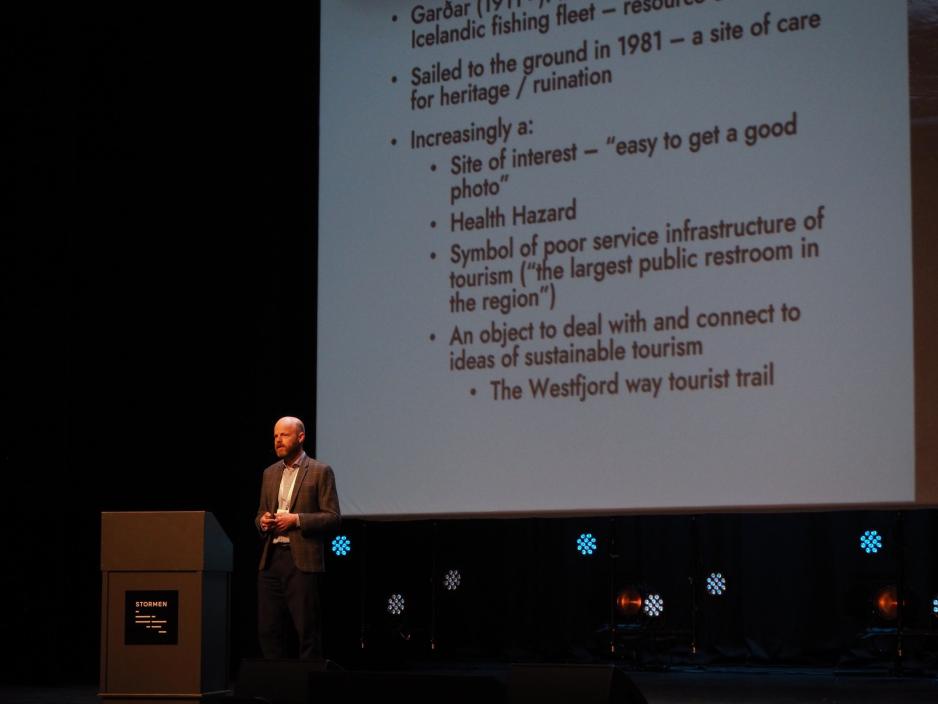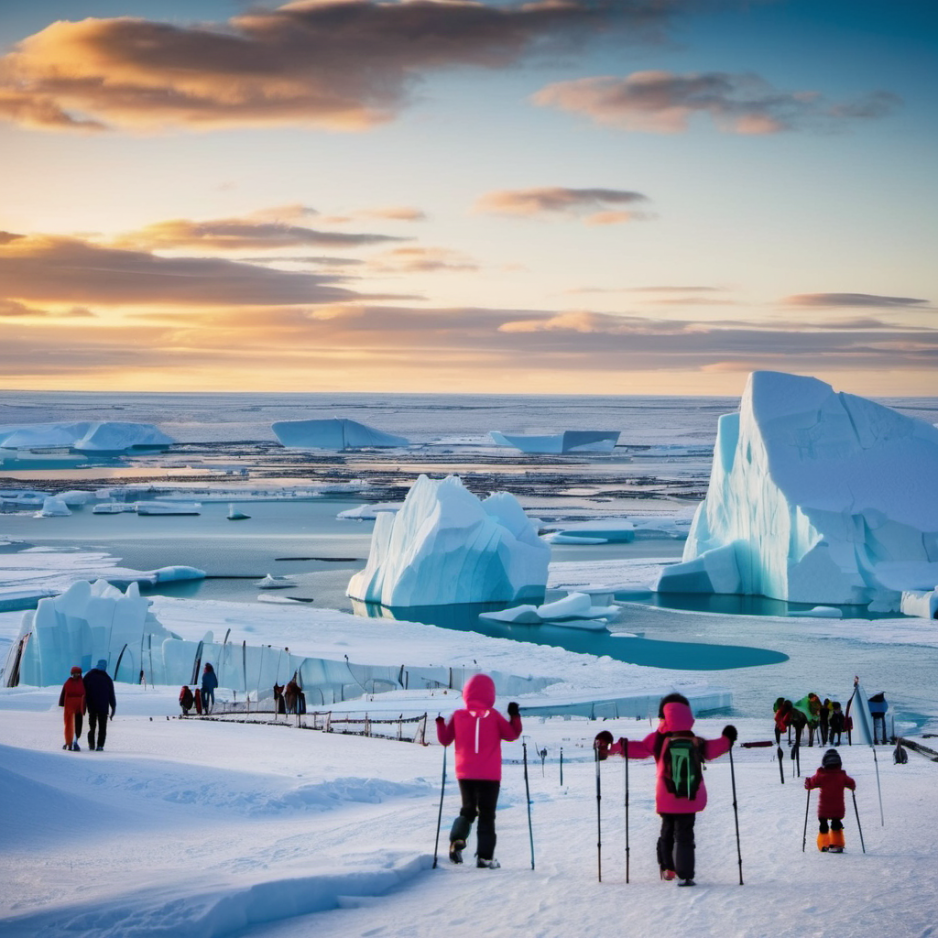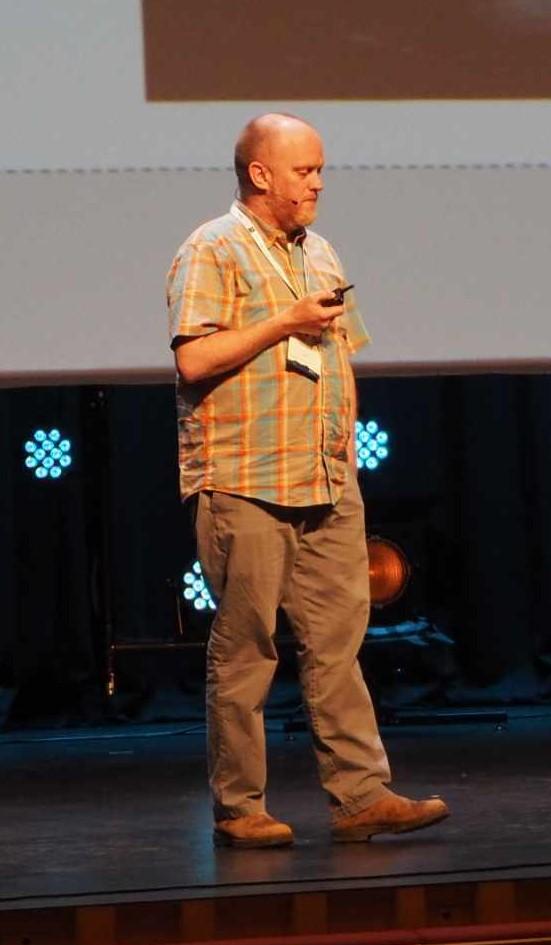The Arctic Congress 2024: Arctic Tourism Destinations: From Wilderness to Disneyland

Researcher Ria-Maria Adams from the University of Vienna at the Arctic Congress 2024. (Photo: Birgitte Martinussen)
Bodø (High North News): Arctic tourism destinations develop to match the imagined idea of their visitors, an idea often derived from social media. This leads to a ‘Disneyfication’ of Arctic destinations, oftentimes at the cost of local people and places’ needs.
This week, the Arctic Congress kicked off in Bodø, Northern Norway.
At two sessions targeting Arctic tourism, several researchers discussed how social media shapes tourists' expectations of Arctic destinations.
Researcher Ria-Maria Adams presented her research on Finnish Lapland and Rovaniemi, in particular. She argued that some Arctic tourism destinations develop to match the imagined idea of their visitors and that this can lead to a 'Disneyfication' of Arctic destinations, often at the cost of local people and places' needs.
Home of Santa Claus
Adams uses Rovaniemi in Finnish Lapland as an example of such development:
"Finnish Lapland has been featured as an exotic and mystical fantasy land."
“It has transformed in the past 40 years to match the imaginary of the Christmas destination.”
Rovaniemi has emerged as Santa’s homeland after a photo from 1984, showing the first Concorde flight landing in Rovaniemi on December 25th.
“The Finnish Tourism Board established a Santa Claus working group in 1984 with the goal of promoting the idea of Lapland being the true home of Santa Claus.”
The Disneyfication of the Arctic
"Over the years, we have seen a “Disneyfication” of the Arctic, like it is a region with just polar bears and people living in igloos like a scene from Frozen. Such an approach hinders the true potential of Arctic development and limits the interest of international investors. The Arctic is not a small glass snowball. It is a region where people live, study, and work."
On a similar note, researcher Adams says that these developments in tourism could be harmful to the local population and the indigenous peoples.
She referred to problematic Sami representations in an attempt to satisfy tourists who seek “authentic” Arctic experiences. These representations, however, are not authentic, but rather activities and destinations developed to match the tourists’ idea of the destination.
"Disneyfication"
The term "Disneyfication" describes the commercial transformation of something into a more simplified, controlled, and 'safe' state, reminiscent of the Walt Disney brand.
In broad terms, it describes the process of stripping a real place or thing of its original character and representing it in a sanitized format where references to anything negative or inconvenient are removed, and the facts are simplified with the intent of rendering the subject more pleasant and easily grasped.
In the case of physical places, this involves replacing the real with an idealized, tourist-friendly veneer.
Based on rapid Western-style globalization and consumerist lifestyles, the term Disneyfication is mostly used derogatorily to imply the social and cultural homogenization of things.
Source: Wikipedia
“To satisfy tourist expectations, the tourism industry started selling its own versions of Sami culture.”
In an InfraNorth blog post, Adams and two co-authors expand on the matter:
"The promotion of the imaginary figure of Santa Claus and other related processes like the Disneyfication of the Arctic have and continue to cause harm to Indigenous cultures and ways of life. Santa’s main traffic arteries are encroaching on reindeer grazing areas. New (tourist) infrastructure is typically built to satisfy the imagination of tourists rather than to recognize and carefully co-create more sustainable tourism practices with local Indigenous communities and governments."
Glass igloos
Adams also points to husky safaris and glass igloos as examples of the Disneyfication of the European Arctic:
“Husky safaris have no historical or cultural background in Northern Finland. Such activities exemplify the Disneyfication of the European Arctic" and "Glass igloos are not authentic or local housing, but tourists associate the igloos with the Arctic and are willing to pay high prices for staying in them.”
“Here we can see clearly how tourism structures change the architecture in this community, creating a gap between the tourism world and the everyday lives of locals.”

Gunnar Thór Jóhannesson from the University of Iceland at the Arctic Congress 2024. His presentation, titled 'Arctic Tourism in the Making,' focused on the importance of tourists and their performances in the shaping of an attraction. (Photo: Birgitte Martinussen)
Social media shapes attractions
Adams also spoke of the role of social media in creating an Arctic image and how the tourism industry feeds the imaginary through its own social media photos.
"A new trend on social media is the so-called pre-weddings and marriage proposals set in the idyllic Arctic landscapes. In these images, we can see how huskies and reindeer are used as prompts to highlight the Arcticness of the place. The tourism industry actively keeps promoting new possibilities to gain attraction, including wedding ceremonies in ice hotels."
Researcher Gunnar Thór Jóhannesson from the University of Iceland chose to highlight the power of social media in Arctic tourism and how tourists themselves can create destinations through the power of an Instagram photo.
The region's largest public restroom
Jóhannesson pointed to the shipwreck of Gardar, Iceland's oldest steel ship, in Patreksfjordur in the Westfjords.
The shipwreck has emerged as a site of interest, with Jóhannesson saying that is due to its 'Instagrammable' quality.
"It is very easy to take a good photo of it, making it even more popular."

The Gardar BA 64 shipwreck in the Westfjords, Iceland. (Photo: Eric Kilby)
The ship has become the symbol of poor infrastructure in tourism, illustrated by its nickname: 'The largest public restroom in the region."
As the site was not intended to be a tourist destination, it is not safe to visit, and the local authorities are worried about health hazards.
"The municipal authorities are now trying to take control of the site. They are very concerned that this is unsafe. Tourists want to touch and explore things, people try to embark on the ship, which also creates dangers and risks."
Ria-Maria Adams also spoke about potential risks and a source of friction between the locals and tourists in Finnish Lapland. She mentioned that some locals are more conscious of using roads during seasonal rushes because it does not always feel safe, and some rental cars are driven by travelers who do not know how to drive in winter conditions.

AI-generated picture by Pixlr, using the prompt 'Arctic tourism destination.'
AI adds to the complexity
Nipissing University Researcher Patrick T. Maher started his presentation by speaking of the Justin Bieber effect on the Fjaðrárgljúfur canyon in Iceland. That is, how the popstar increased the number of visitors to the canyon by 1 million between 2016 and 2020 after his 2015 video for his song 'I'll Show You.'
"That has huge ramifications for both the visitors and their tourist experience but also for those trying to manage this," referring to how the 'Bieber Canyon' has required the development of infrastructure and regulation to protect its vulnerable vegetation.
He continued by emphasizing how the tourism experience has changed with the scope and reach of social media.
"A second after you've visited a place, you can tell all of your friends and people you have never even met."
"Social media has propelled the tourist experience forward, it is this hyper-influenced stage where people can just throw it all out there for the world to see."
After the audience asked how AI would affect Arctic tourism, Maher said, "It is going to add a whole layer of messiness, a completely other layer of complexity."




